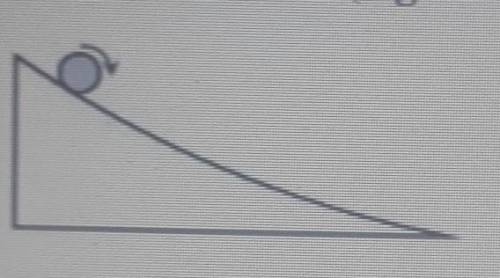
Physics, 05.02.2021 21:00 kanerobertrosss2213
The gravitational potential energy decreases and the kinetic energy increases. The gravitational potential energy is transformed into kinetic energy as the ball rolls down the ramp.
A. The gravitational potential energy decreases and the kinetic energy increases. The gravitational potential energy is transformed into kinetic energy as the ball rolls down the ramp.
B. The gravitational potential energy decreases and the kinetic energy increases. As soon as the ball starts moving it no longer has gravitational potential energy; it has only kinetic energy.
C. The kinetic energy and and gravitational potential energy both decrease. Both forms of energy are used up as the ball moves and are not transformed into any other form of energy.
D. The gravitational potential energy and the kinetic energy both stay the same. One form of energy cannot be transformed into a different form of energy.


Answers: 2


Another question on Physics

Physics, 22.06.2019 02:50
Steam is generated in a boiler of a cogeneration plant at 10 mpa and 450°c at a steady rate of 5 kg/s. in normal operation, steam expands in a turbine to a pressure of 0.5 mpa and is then routed to the process heater, where it supplies the process heat. steam leaves the process heater as a saturated liquid and is pumped to the boiler pressure. in this mode, no steam passes through a condenser, which operates at 20 kpa. (a) determine the power produced in the turbine and the rate at which process heat is supplied in this mode. (b) determine the power produced in the turbine and the rate of process heat supplied if only 60 percent of the steam is routed to the process heater and the remainder is expanded to the condenser pressure. (3.32 mw; 9.69 mw; 4.25 mw; 5.82 mw)
Answers: 3

Physics, 22.06.2019 13:40
Awind turbine is rotating counterclockwise at 0.5 rev/s and slows to a stop in 10 s. its blades are 20 m in length. (a) what is the angular acceleration of the turbine? (b) what is the centripetal acceleration of the tip of the blades at t=0s? (c) what is the magnitude and direction of the total linear acceleration of the tip of the blades at t=0s?
Answers: 1

Physics, 22.06.2019 16:20
Which best describes what forms in nuclear fission? a. two smaller, more stable nucleib. two larger, less stable nucleic. one smaller, less stable nucleusd. one larger, more stable nucleus
Answers: 1

Physics, 22.06.2019 16:30
One number is said to be an "order of magnitude" larger than another number if choose one: a. it is 10 times larger. b. it is 5 times larger. c. it is 3 times larger. d. it is 100 times larger. e. it is 2 times larger.
Answers: 1
You know the right answer?
The gravitational potential energy decreases and the kinetic energy increases. The gravitational pot...
Questions

Mathematics, 16.04.2021 17:40


Health, 16.04.2021 17:40




Biology, 16.04.2021 17:40

Mathematics, 16.04.2021 17:40

English, 16.04.2021 17:40

Biology, 16.04.2021 17:40

English, 16.04.2021 17:40



Mathematics, 16.04.2021 17:40




Mathematics, 16.04.2021 17:40




